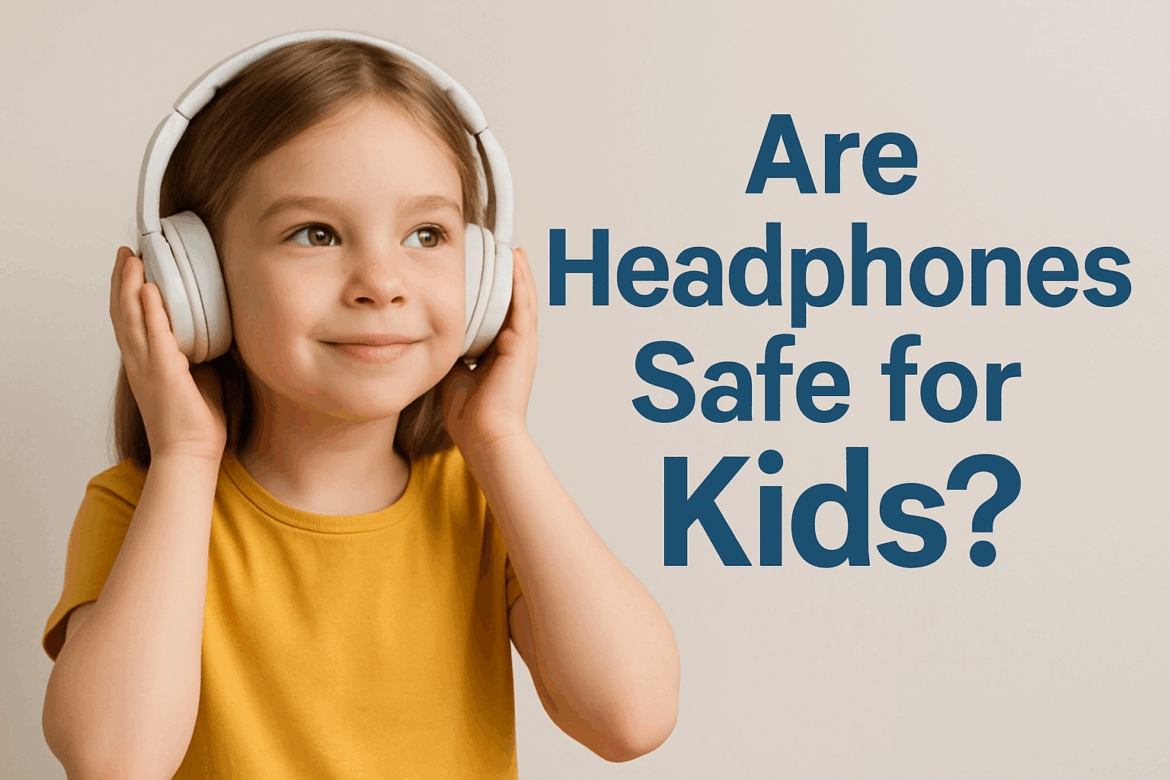In a world filled with the symphony of technology, Kopfhörer have become an integral part of our daily lives. From the soothing lullabies that put infants to sleep to the dynamic schlägt that energize teenagers, headphones are a constant companion. However, this raises a crucial question: Are headphones safe for kids? As we delve into the harmonious complexities of this topic, we must explore the potential risks and the measures that can be taken to ensure the safety of our young listeners.
Der süße Klang der Vorsicht: Die Risiken verstehen
Das empfindliche Trommelfell von Kindern ist wie die Saiten eines fein gestimmten Instruments: empfindlich und anfällig für äußere Einflüsse. Längerer Kontakt mit lauter Musik über Kopfhörer kann zu Hörproblemen führen – ein Problem, das auch in der Kinderheilkunde immer wieder aufkommt.
Hörverlust: Eine stille Bedrohung
Hörverlust bei Kindern ist nicht offensichtlich und daher eine stille Bedrohung, die oft erst bemerkt wird, wenn erhebliche Schäden entstanden sind. Laut der Weltgesundheitsorganisation sind rund 1,1 Milliarden Teenager und junge Erwachsene aufgrund unsicherer Hörgewohnheiten von Hörverlust bedroht. Die Anfälligkeit des kindlichen Hörsystems kann nicht genug betont werden, da es sich noch in der Entwicklungsphase befindet.
Die folgende Tabelle veranschaulicht die empfohlenen maximalen Lautstärkepegel und Hördauern für Kinder:
| Altersgruppe | Maximaler Lautstärkepegel (dB) | Empfohlene Hördauer (pro Tag) |
|---|---|---|
| 3-5 Jahre | 75 | 1 Stunde |
| 6-12 Jahre | 85 | 2 Stunden |
| 13-18 Jahre | 85 | 3 Stunden |
Nicht nur die Lautstärke stellt ein Risiko dar, sondern auch die Dauer der Belastung. Als Hüter junger Ohren ist es wichtig, dass Kinder diese Richtlinien einhalten, um Langzeitschäden zu vermeiden.
Psychologische Auswirkungen: Die unsichtbaren Auswirkungen
Neben den akustischen Risiken können Kopfhörer auch psychische Auswirkungen auf Kinder haben. Der immersive Charakter von Kopfhörern kann zu sozialer Isolation führen, da sich Kinder in ihre eigene Welt zurückziehen und von ihrer Umgebung abkoppeln. Dies kann die soziale Entwicklung und die Kommunikationsfähigkeiten beeinträchtigen, die in den prägenden Jahren entscheidend sind.
Harmonisierung der Sicherheit: Tools und Tipps für Eltern
Als Dirigenten des Hörerlebnisses ihrer Kinder spielen Eltern eine entscheidende Rolle bei der Gewährleistung der Kopfhörersicherheit. Mit einer Symphonie aus Tools und Tipps können Eltern eine Umgebung schaffen, in der Kinder Musik und Audioinhalte genießen können, ohne ihre Gesundheit zu gefährden.
Kopfhörer mit Lautstärkebegrenzung: Eine Symphonie der Sicherheit
Kopfhörer mit Lautstärkebegrenzung sind ein Meisterstück für sicheres Hören. Diese Kopfhörer sind so konzipiert, dass sie die maximale Lautstärke auf ein sicheres Niveau von normalerweise etwa 85 Dezibel begrenzen. So wird sichergestellt, dass Kinder sich nicht versehentlich schädlichen Lärmpegeln aussetzen.
Achten Sie bei der Auswahl von Kopfhörern auf Modelle mit der Kennzeichnung „Lautstärkebegrenzung“ oder „Kindersicher“. Diese Produkte sind auf die Sicherheit von Kindern ausgelegt und geben Eltern und Erziehungsberechtigten ein beruhigendes Gefühl.
Kindersicherung: Eine Ouvertüre zum verantwortungsvollen Zuhören
Viele Geräte sind mittlerweile mit Kindersicherungsfunktionen ausgestattet, mit denen Eltern Lautstärkebegrenzungen festlegen und die Nutzung überwachen können. Durch die Aktivierung dieser Funktionen können Eltern sicherstellen, dass ihre Kinder nicht nur eine sichere Lautstärke verwenden, sondern auch die empfohlene Hördauer einhalten.
Auch die Erstellung eines strukturierten Hörplans kann hilfreich sein. Ermutigen Sie zu Pausen und fördern Sie Aktivitäten ohne Kopfhörer, um eine ausgewogene Klangumgebung zu schaffen.
Die Symphonie des Wissens: Kindern sicheres Zuhören beibringen
Aufklärung ist das wirksamste Mittel zur Förderung sicherer Hörgewohnheiten. Wenn Kinder über die Bedeutung des Gehörschutzes sprechen, können sie fundierte Entscheidungen treffen.
Interaktives Lernen: Eine Melodie des Engagements
Durch interaktive Lernmethoden kann das Thema Hörschutz für Kinder spannender gestaltet werden. Nutzen Sie Geschichten, Spiele und visuelle Hilfsmittel, um die Folgen unsicheren Hörverhaltens zu veranschaulichen. Durch eine verständliche und unterhaltsame Präsentation der Informationen verinnerlichen Kinder die Botschaft leichter.
Vorbilder: Impulsgeber für den Wandel
Kinder ahmen oft das Verhalten ihrer Erwachsenen nach. Indem Eltern selbst sichere Hörgewohnheiten praktizieren, können sie ihren Kindern ein positives Beispiel geben. Musikhören bei moderater Lautstärke und regelmäßige Pausen können die Bedeutung dieser Gewohnheiten unterstreichen.
Fazit: Ein Crescendo des sicheren Zuhörens
Angesichts der Geräuschkulisse des modernen Lebens ist die Sicherheit der Hörerlebnisse von Kindern von größter Bedeutung. Kopfhörer eröffnen zwar den Zugang zu einer Welt voller Musik und Lernen, müssen aber verantwortungsvoll genutzt werden, um Schäden zu vermeiden. Indem wir die Risiken verstehen, die verfügbaren Hilfsmittel nutzen und junge Hörer aufklären, können wir die Freude am Hören mit der Melodie der Sicherheit in Einklang bringen.
Auf dieser symphonischen Reise des Verständnisses findet die Frage „Sind Kopfhörer für Kinder sicher?“ ihre Antwort in unserem heutigen Handeln. Lassen Sie uns eine Zukunft gestalten, in der der Klang der Sicherheit im Leben jedes Kindes widerhallt und ein harmonisches Gleichgewicht zwischen Technologie und Wohlbefinden entsteht.
Zuletzt aktualisiert am 1. Oktober 2025
